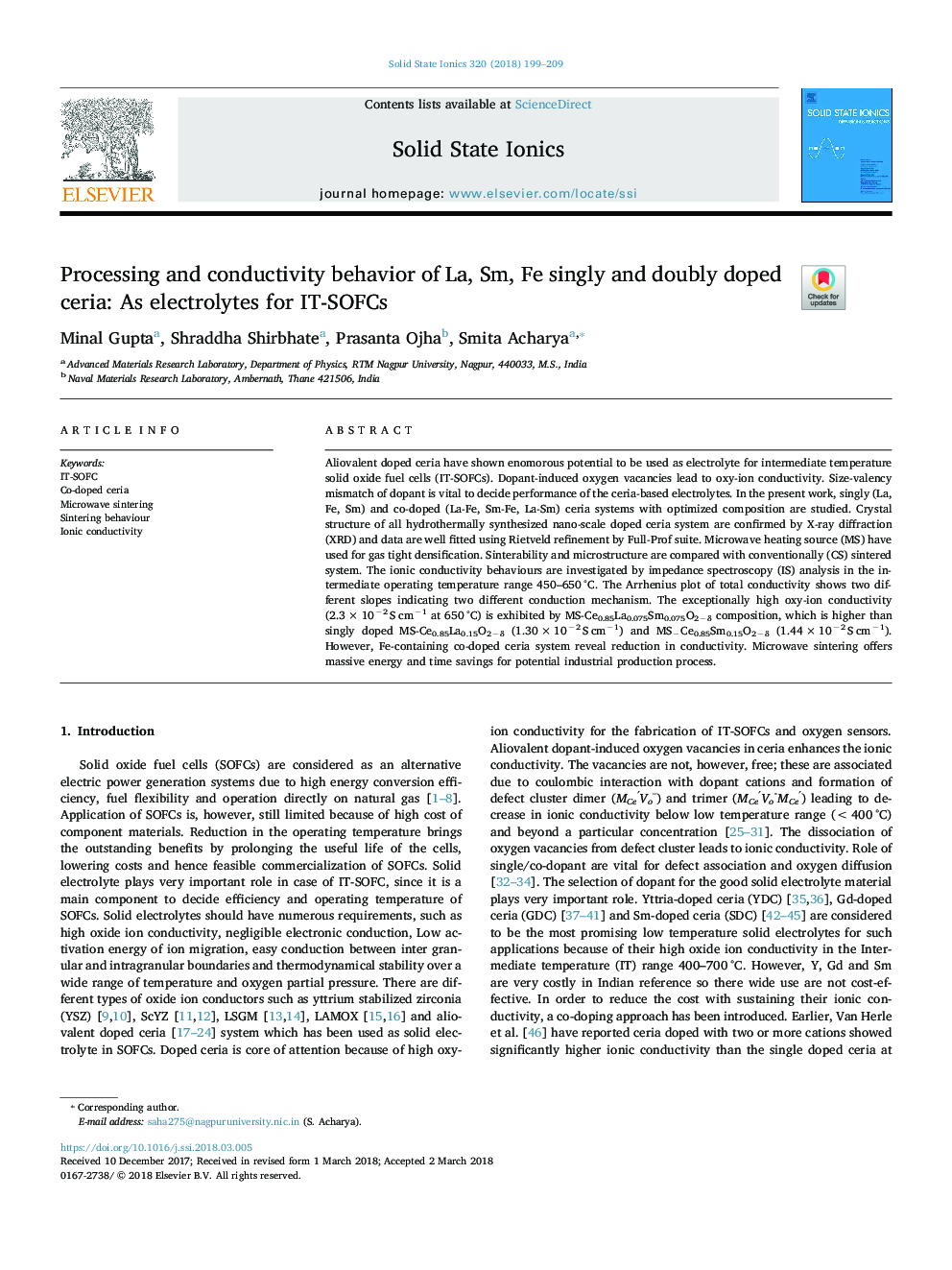| Article ID | Journal | Published Year | Pages | File Type |
|---|---|---|---|---|
| 7744432 | Solid State Ionics | 2018 | 11 Pages |
Abstract
Aliovalent doped ceria have shown enomorous potential to be used as electrolyte for intermediate temperature solid oxide fuel cells (IT-SOFCs). Dopant-induced oxygen vacancies lead to oxy-ion conductivity. Size-valency mismatch of dopant is vital to decide performance of the ceria-based electrolytes. In the present work, singly (La, Fe, Sm) and co-doped (La-Fe, Sm-Fe, La-Sm) ceria systems with optimized composition are studied. Crystal structure of all hydrothermally synthesized nano-scale doped ceria system are confirmed by X-ray diffraction (XRD) and data are well fitted using Rietveld refinement by Full-Prof suite. Microwave heating source (MS) have used for gas tight densification. Sinterability and microstructure are compared with conventionally (CS) sintered system. The ionic conductivity behaviours are investigated by impedance spectroscopy (IS) analysis in the intermediate operating temperature range 450-650â¯Â°C. The Arrhenius plot of total conductivity shows two different slopes indicating two different conduction mechanism. The exceptionally high oxy-ion conductivity (2.3â¯Ãâ¯10â2â¯Sâ¯cmâ1 at 650â¯Â°C) is exhibited by MS-Ce0.85La0.075Sm0.075O2âδ composition, which is higher than singly doped MS-Ce0.85La0.15O2âδ (1.30â¯Ãâ¯10â2â¯Sâ¯cmâ1) and MSâCe0.85Sm0.15O2âδ (1.44â¯Ãâ¯10â2â¯Sâ¯cmâ1). However, Fe-containing co-doped ceria system reveal reduction in conductivity. Microwave sintering offers massive energy and time savings for potential industrial production process.
Related Topics
Physical Sciences and Engineering
Chemistry
Electrochemistry
Authors
Minal Gupta, Shraddha Shirbhate, Prasanta Ojha, Smita Acharya,
